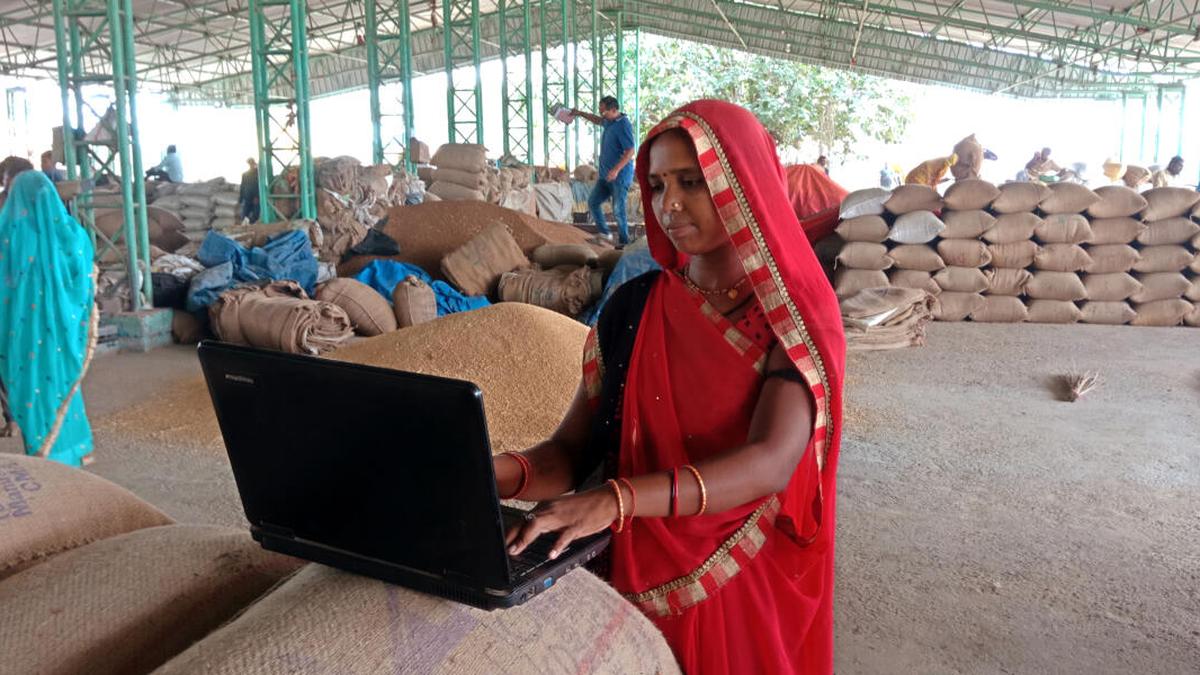One important target of the Sustainable Development Goals (SDGs) is to ensure inclusive and equitable quality education. Within this broad goal, there are two important targets pertaining to Internet and digital skills. Target 4.4.1 talks about the share of youth and adult population who have some Information and Communications Technology (ICT) skill. Target 4.4.2 pertains to a degree of proficiency in digital skills. Therefore, to attain the SDG4 target of education, providing ICT infrastructure and assessing digital skills is important.
The data to assess these skills were rather sparse until the National Sample Survey Office (NSSO) conducted the Comprehensive Annual Modular Survey (CAMS) between July 2022 and June 2023. This is arguably the first sample survey which asks a set of questions about people’s access to, and use of, digital technology. The survey was conducted across India in 3.02 lakh households and with 12.99 lakh people.
At the all-India level, 76.3% of households have broadband Internet facilities. In rural areas, 71.2% of households have the facility, while in urban areas, 86.5% do. This data shows the deep penetration of the Internet in India. But there are variations across States, castes, gender, and class.
In some States, more than 90% of the households have a broadband connection. These include Delhi, Goa, Mizoram, Manipur, Sikkim, Haryana, and Himachal Pradesh. But in some other States, fewer than 70% have a broadband connection. These include West Bengal (69.3%), Andhra Pradesh (66.5%), Odisha (65.3%), and Arunachal Pradesh (60.2%).
There are also significant variation within caste groups on the issue of broadband connectivity at home. In households in the general category, 84.1% have broadband connection, while the numbers for Other Backward Classes (OBCs), Scheduled Castes (SCs), and Scheduled Tribes (STs) are 77.5%, 69.1%, and 64.8% respectively.
While it is significant that within all social groups, the majority of the households have broadband connectivity, OBC, SC, and ST communities are still significantly behind households in the general category in this aspect.
The most striking difference predictably exists in terms of income. Generally, the monthly per capita consumption expenditure (MPCE) is used as a proxy for income, since income data at the household level is not available. From the unit-level data of CAMS, we have arranged the population from the bottom 10% to the top 10% in terms of MPCE (Chart 1).
Chart 1 | The chart shows the broadband connectivity of households according to the decile classes of Monthly Per Capita Expenditure (in %)
While in the lowest decile class, 71.6% households don’t have broadband connectivity, the number for the highest decile class is only 1.9%. However, even for those who belong to the second lowest decile class, the majority (56.2%) have broadband connection at home.
In other words, while the poorest are still on the wrong side of the digital divide, broadband connectivity improves with every decile class. Economic status is a significant determinant of broadband connectivity.
The government has said that provision of high-speed Internet is a fundamental utility akin to water or electricity (Digital India website). To facilitate coverage of the poorest sections of the society, the government can think of subsidising broadband connections so that there is universal coverage.
According to the CAMS report, 94.2% of rural households and 97.1% of urban households have mobile or telephone connections in their households.
When we look at people aged 15 years and above, 92.4% in urban areas and 83.9% in rural areas can use mobile phones. However, a deeper look at the data shows that the use of mobile phones is not as universal as the headline numbers suggest.
Table 2 shows the share of the population who use a mobile phone with an active SIM card exclusively, for making calls or accessing the Internet. The data shows that women and socially deprived sections are at a disadvantage.
For example, within the general category, only 25.3% of women use mobile phones exclusively in rural areas, while the number for urban areas is 51.2%. For SCs, STs, and OBCs, the numbers are far below the general category for both men and women.
While there is a lot of discussion about 5G connectivity in India, data show that just more than half the population in rural areas uses 4G, while more than 70% in urban areas use the same.
A significant share of the population (40.4%) still uses mobile technology which is more primitive than 4G. The share of people with 5G connectivity is negligible in the country.
To gauge digital skills, we focused on some basic tasks such as using the Internet, sending emails, copy-pasting from documents, using arithmetic operations in spreadsheets, and performing online banking transactions (Chart 3).
Chart 3 | Select digital skills of the rural and urban populations of India (15 years and above) (in %)
Around 53.6% of the population (15 years and above) can use the Internet in rural areas and 74% in urban areas. The proportion who can send/receive emails is even lower (20% for rural, 40% for urban).
Only around 40% of the rural population can perform the copy-paste function, while 60% of the urban population can. The share of people who can perform arithmetic operations in spreadsheets is extremely low. Only 37.8% of India’s population aged 15 years and above can perform online banking transactions.
Subhanil Chowdhury is an Associate Professor of Economics at St. Xavier’s University, Kolkata, and Samiran Sengupta is a data analyst
Published – June 20, 2025 07:00 am IST
